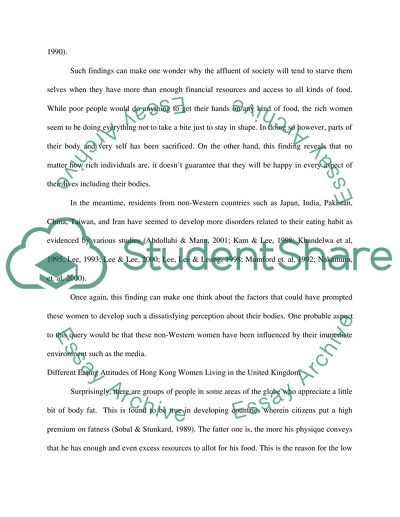Cite this document
(Cultural Differences Influence on Female Body Image, Interlinked with Coursework, n.d.)
Cultural Differences Influence on Female Body Image, Interlinked with Coursework. Retrieved from https://studentshare.org/psychology/1553988-an-introduction-of-psychology-lab-reportcultural-difference-influence-european-and-chineseon-female-body-image-interlinked-with-eating-attitude-and-self-esteem
Cultural Differences Influence on Female Body Image, Interlinked with Coursework. Retrieved from https://studentshare.org/psychology/1553988-an-introduction-of-psychology-lab-reportcultural-difference-influence-european-and-chineseon-female-body-image-interlinked-with-eating-attitude-and-self-esteem
(Cultural Differences Influence on Female Body Image, Interlinked With Coursework)
Cultural Differences Influence on Female Body Image, Interlinked With Coursework. https://studentshare.org/psychology/1553988-an-introduction-of-psychology-lab-reportcultural-difference-influence-european-and-chineseon-female-body-image-interlinked-with-eating-attitude-and-self-esteem.
Cultural Differences Influence on Female Body Image, Interlinked With Coursework. https://studentshare.org/psychology/1553988-an-introduction-of-psychology-lab-reportcultural-difference-influence-european-and-chineseon-female-body-image-interlinked-with-eating-attitude-and-self-esteem.
“Cultural Differences Influence on Female Body Image, Interlinked With Coursework”, n.d. https://studentshare.org/psychology/1553988-an-introduction-of-psychology-lab-reportcultural-difference-influence-european-and-chineseon-female-body-image-interlinked-with-eating-attitude-and-self-esteem.


